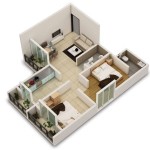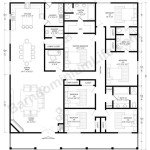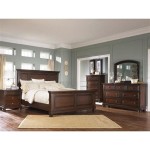Standard Window Size For Bedroom
The size of the windows in a bedroom is an important factor to consider when designing the space. The right size windows can provide ample natural light, ventilation, and views, while also maintaining privacy and energy efficiency.
The standard window size for a bedroom varies depending on the size of the room, the style of the home, and the local climate. However, there are some general guidelines that can be followed to ensure that the windows are appropriately sized.
Factors to Consider
When determining the standard window size for a bedroom, several factors should be taken into account:
* Room size: Larger bedrooms require larger windows to provide adequate natural light and ventilation. * Window placement: The placement of windows affects the amount of light and privacy they provide. Windows facing south or west provide the most natural light, while windows facing north or east provide less light but more privacy. * Style of the home: The architectural style of the home influences the size and shape of the windows. Traditional homes typically have smaller windows with smaller panes, while modern homes often have larger windows with larger panes. * Local climate: In colder climates, smaller windows are more energy-efficient, as they reduce heat loss. In warmer climates, larger windows can be used to take advantage of natural ventilation.Standard Window Sizes
Based on these factors, the standard window size for a bedroom typically ranges from 24 inches to 48 inches in width and 36 inches to 72 inches in height.
* Single-hung windows: Single-hung windows are the most common type of window used in bedrooms. They have a lower sash that slides up and down to open and close. Standard sizes for single-hung windows range from 24 inches to 36 inches in width and 36 inches to 60 inches in height. * Double-hung windows: Double-hung windows have both an upper and lower sash that slide up and down to open and close. Standard sizes for double-hung windows range from 24 inches to 48 inches in width and 36 inches to 72 inches in height. * Casement windows: Casement windows are hinged on one side and open outward like a door. Standard sizes for casement windows range from 24 inches to 48 inches in width and 36 inches to 60 inches in height. * Awning windows: Awning windows are hinged at the top and open outward from the bottom. Standard sizes for awning windows range from 24 inches to 48 inches in width and 36 inches to 60 inches in height.Energy Efficiency
When selecting windows for a bedroom, it is important to consider energy efficiency. Energy-efficient windows can help to reduce heating and cooling costs and make the home more comfortable year-round.
Energy-efficient windows typically have the following features:
* Double or triple glazing * Low-emissivity (Low-E) coating * Argon or krypton gas fill * Energy Star certificationConclusion
The standard window size for a bedroom should be determined based on the size of the room, the style of the home, the local climate, and energy efficiency considerations. By following these guidelines, homeowners can select windows that provide the optimal amount of natural light, ventilation, privacy, and energy efficiency for their bedroom.

Standard Window Sizes For 6 Styles

Standard Window Sizes For Bedroom Living Room Bathroom

Standard Window Sizes Your Guide To Replacement Dimensions

Window Egress Definition Laws And What You Should Know Southwest Exteriors Blog

Part
Standard Window Size Bedroom Living Room Bathroom

Window Egress For Bedrooms Exterior Inspections Internachi Forum

Standard Window Sizes Bedroom Living Room And Bathroom Constructupdate Com

Standard Window Sizes Guide For 2025

Upvc Windows Sizes Standard Widths Heights
See Also








